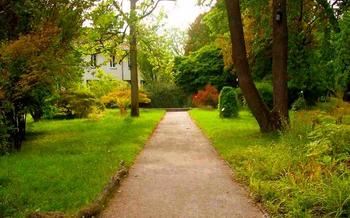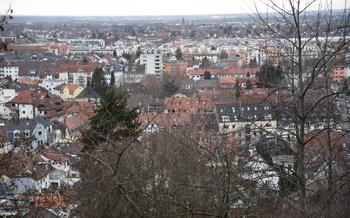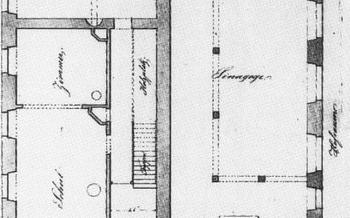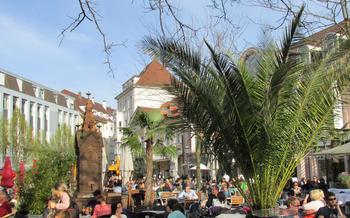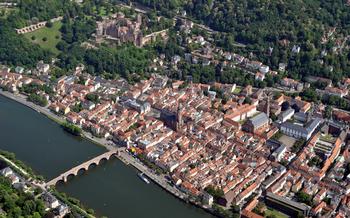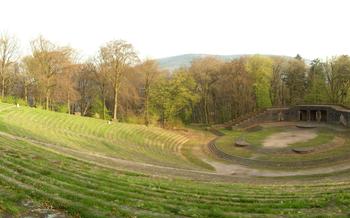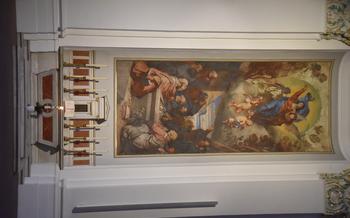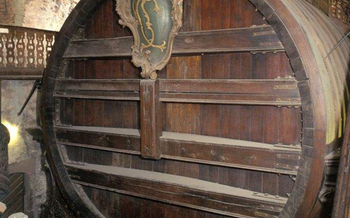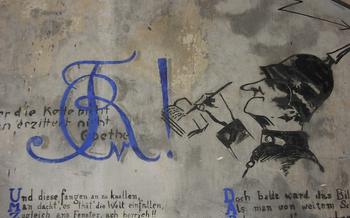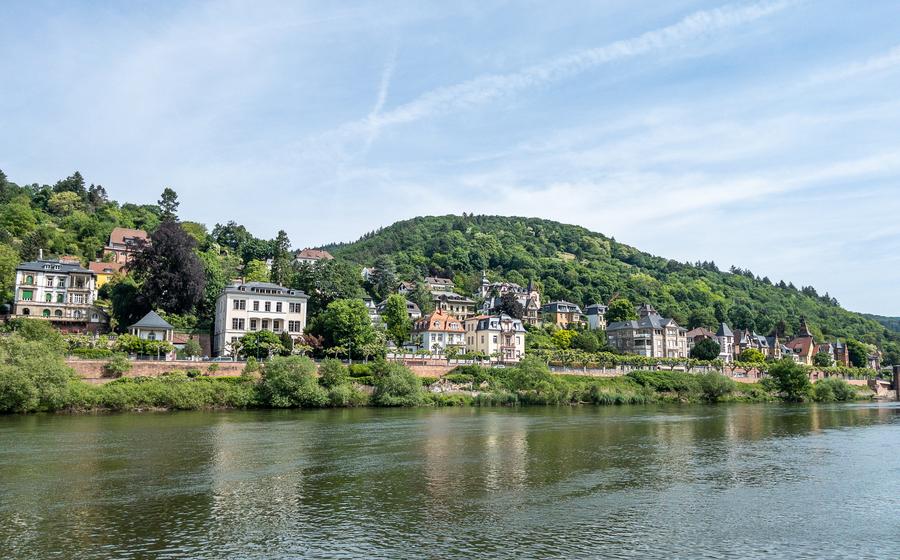
The University of Heidelberg Mineralogical Museum
- The Antiquity of the Museum
- The Mineralogical Collection: A Treasure Trove of Earth's Mysteries
- Interactive Exhibits
- Educational Programs: Inspiring Curiosity and Fostering Knowledge
- Research and Conservation Efforts
- Temporary Exhibitions
- Location and Accessibility
- Admission and Hours of Operation
- Guided Tours
- Souvenirs and Giftshop
- Photography and Social Media
- Accessibility for Children: Making Mineralogy Fun and Engaging for the Young Ones
- Sustainability and Environmental Awareness
- Upcoming Events and Exhibitions
- Insider Tip
The Antiquity of the Museum
The University of Heidelberg Mineralogical Museum stands as a testament to the rich history of mineralogy in Germany. Its roots can be traced back to the 18th century, making it one of the oldest mineralogical museums in the country. The museum's collection was significantly shaped by renowned scientists such as Karl Leonhard, who played a pivotal role in expanding and organizing the specimens. The museum's collection holds immense importance in the field of mineralogical research, as it has contributed to the advancement of our understanding of minerals and their properties.
The Mineralogical Collection: A Treasure Trove of Earth's Mysteries
The Mineralogical Museum at the University of Heidelberg houses a captivating collection of over 100,000 mineral specimens, each a testament to the Earth's diverse geological history. These minerals, sourced from every corner of the globe, offer a glimpse into the planet's hidden depths and the processes that have shaped its landscapes. Among the highlights of the collection are rare and precious gemstones, such as diamonds, rubies, and emeralds, which sparkle with an unrivaled brilliance. Visitors can marvel at the intricate beauty of crystallized minerals, each formed by the patient work of nature over millions of years. The museum also boasts an impressive collection of meteorites, remnants of celestial bodies that have crash-landed on Earth, providing valuable insights into the origins of our solar system.
Interactive Exhibits
The University of Heidelberg Mineralogical Museum offers a variety of interactive exhibits that allow visitors to explore the properties and characteristics of minerals in a fun and engaging way. The "Mineral Touch Table" is a popular exhibit that features a collection of mineral specimens that visitors can touch and examine up close. Each specimen is accompanied by a label that provides information about its name, composition, and origin.
Another interactive exhibit is the "Fluorescence Cabinet," which displays minerals that emit a beautiful glow when exposed to ultraviolet light. Visitors can use a special flashlight to illuminate the minerals and observe the different colors and patterns of fluorescence. These interactive exhibits not only provide a hands-on learning experience but also spark curiosity and fascination in visitors of all ages.
Educational Programs: Inspiring Curiosity and Fostering Knowledge
The University of Heidelberg Mineralogical Museum recognizes the importance of promoting scientific literacy and fostering an appreciation for mineralogy among the general public. To this end, the museum offers a range of educational programs tailored to visitors of all ages and interests. These programs provide a unique opportunity to delve deeper into the fascinating world of minerals, explore their properties and characteristics, and gain insights into the latest scientific research.
Guided tours are a popular way to experience the museum's collection. Led by knowledgeable and experienced guides, these tours offer visitors a personalized journey through the exhibits, highlighting key specimens and providing in-depth explanations of their significance. Specialized tours are also available for specific groups, such as school classes or geology enthusiasts, allowing for a more tailored and focused exploration of particular topics.
In addition to guided tours, the museum organizes workshops, lectures, and educational events throughout the year. These events are designed to engage visitors of all ages, from curious children to adults seeking to expand their knowledge of mineralogy. Workshops provide hands-on experiences, allowing participants to examine minerals up close, conduct experiments, and learn about the latest techniques used in mineralogical research. Lectures, on the other hand, offer in-depth presentations on specific topics by renowned experts in the field.
These educational programs are not only informative but also highly interactive and enjoyable. By participating in these activities, visitors can satisfy their curiosity, gain a deeper understanding of the mineral world, and develop a lifelong appreciation for the beauty and diversity of minerals.
Research and Conservation Efforts
The University of Heidelberg Mineralogical Museum is not only a repository of precious minerals but also a hub of ongoing research and conservation efforts. The museum's collection serves as a valuable resource for scientists worldwide, facilitating studies on mineral composition, crystallography, and geochemical processes. Researchers utilize the diverse specimens to investigate the formation and evolution of minerals, their role in geological processes, and their potential applications in various fields.
The museum's conservation efforts play a crucial role in preserving its collection for future generations. Minerals, despite their inherent durability, can be susceptible to deterioration over time due to factors such as exposure to light, humidity, and temperature fluctuations. The museum employs specialized techniques and equipment to monitor and control the environmental conditions within the exhibition spaces, ensuring the long-term preservation of the specimens.
Moreover, the museum actively participates in international conservation initiatives, collaborating with other institutions to develop best practices for mineral preservation and sharing knowledge and expertise. By safeguarding its collection and contributing to scientific research, the University of Heidelberg Mineralogical Museum continues to be a vital center for the advancement of mineralogical knowledge and the preservation of our geological heritage.
Temporary Exhibitions
The University of Heidelberg Mineralogical Museum offers a diverse range of temporary exhibitions that delve into specific themes or collections related to mineralogy. These exhibitions provide visitors with an opportunity to explore new and exciting aspects of the mineral world. Past temporary exhibitions have showcased topics such as the "Minerals of the Ocean Depths," "The World of Gemstones," and "Minerals from Space." These exhibitions often feature rare and unique specimens, interactive displays, and educational programs, making them a great way to learn more about the fascinating world of minerals.
Location and Accessibility
The Mineralogical Museum in Heidelberg is conveniently located in the heart of the city, just a short walk from other popular attractions like Heidelberg Castle and the Old Town. Its central location makes it easily accessible by public transportation, with several bus and tram lines stopping nearby. If arriving by car, there are several parking garages and street parking options available in the vicinity. Visitors with disabilities can find accessible entrances and facilities, including elevators and wheelchair-accessible restrooms, ensuring a comfortable and inclusive experience for all.
Admission and Hours of Operation
Admission to the University of Heidelberg Mineralogical Museum is free of charge, making it an accessible and affordable attraction for visitors of all ages. The museum is open Tuesday through Sunday from 10:00 AM to 5:00 PM, providing ample time to explore the exhibits and learn about the fascinating world of minerals. While the museum is generally not crowded, it is recommended to avoid visiting during peak tourist season or on public holidays to ensure a more intimate and enjoyable experience. For those with limited time, the museum offers a guided tour that lasts approximately one hour and provides an in-depth look at the collection's highlights. Guided tours are available upon request and can be arranged through the museum's website or by contacting the museum directly.
Guided Tours
Enhance your visit to the University of Heidelberg Mineralogical Museum by opting for a guided tour. These tours offer an immersive and informative experience, allowing you to delve deeper into the fascinating world of minerals. Knowledgeable guides lead the tours, sharing insights into the museum's history, collection highlights, and the significance of mineralogical research.
Booking a guided tour is simple and can be done through the museum's website or by contacting the museum directly. Various tour options are available, catering to different interests and levels of expertise. Whether you're a casual visitor or a passionate enthusiast, there's a tour tailored to suit your needs.
I had the pleasure of taking a guided tour myself, and I was thoroughly impressed by the expertise and enthusiasm of our guide. She brought the exhibits to life, explaining the geological processes that formed the minerals and sharing captivating stories about their discovery and significance. The tour provided a deeper understanding and appreciation for the museum's collection.
Whether you're visiting with friends, family, or as a solo traveler, a guided tour is an excellent way to make the most of your time at the University of Heidelberg Mineralogical Museum. Embrace the opportunity to learn from experts and gain a unique perspective on the wonders of the mineral kingdom.
Souvenirs and Giftshop
The University of Heidelberg Mineralogical Museum features a well-stocked gift shop where visitors can purchase a variety of souvenirs, books, and other items related to mineralogy. The gift shop offers a unique opportunity to take home a piece of the museum's collection or to find a thoughtful gift for a friend or family member.
Proceeds from the gift shop support the museum's educational and research activities, ensuring that the collection continues to grow and that the museum can continue to offer engaging and informative exhibits to visitors.
Among the items available in the gift shop are mineral specimens, jewelry, and educational toys. Visitors can find a wide range of mineral specimens, from common varieties to rare and exotic crystals. The jewelry section features pieces made with gemstones and other minerals, while the educational toys are perfect for children who are interested in learning more about mineralogy.
The knowledgeable staff at the gift shop is always happy to assist visitors with their purchases and to provide information on the various items available. Whether you are looking for a unique souvenir or a gift for a loved one, the University of Heidelberg Mineralogical Museum gift shop is sure to have something to suit your needs.
Photography and Social Media
The University of Heidelberg Mineralogical Museum encourages visitors to capture their experiences through photography and share them on social media, provided they adhere to the museum's guidelines. Photography for personal, non-commercial use is permitted in most areas of the museum, but visitors are asked to respect the privacy of other guests and avoid using flash or tripods. Sharing photos and experiences on social media platforms is welcomed, as it helps promote the museum and engage with a broader audience. Visitors are encouraged to use the official museum hashtags and tag the museum's social media accounts to connect with the community and share their perspectives. The museum's staff is always happy to assist visitors with any questions or requests related to photography or social media.
Accessibility for Children: Making Mineralogy Fun and Engaging for the Young Ones
The University of Heidelberg Mineralogical Museum understands the importance of fostering a love for science and mineralogy in young minds. That's why they've made a concerted effort to create an environment that is welcoming, accessible, and enjoyable for children of all ages.
Throughout the museum, you'll find interactive exhibits and hands-on activities designed to capture children's attention and spark their curiosity. For example, the "Mineral Touch Table" allows kids to explore the different textures and properties of various minerals by touching and feeling them. The "Fluorescence Cabinet" demonstrates the fascinating phenomenon of fluorescence, where minerals emit light when exposed to ultraviolet radiation.
In addition to these interactive exhibits, the museum also offers a range of educational programs specifically tailored for children. These programs include guided tours, workshops, and scavenger hunts that make learning about mineralogy fun and engaging. Museum educators are trained to present complex scientific concepts in a way that is easy for children to understand and relate to.
Parents can help their children make the most of their visit by encouraging them to ask questions, explore the exhibits at their own pace, and participate in the interactive activities. The museum also provides a variety of resources for parents, such as activity sheets and guides, to help them facilitate a meaningful learning experience for their children.
Sustainability and Environmental Awareness
The University of Heidelberg Mineralogical Museum is committed to promoting sustainability and environmental awareness through its operations and exhibits. The museum incorporates sustainable practices into its daily operations, such as using energy-efficient lighting, implementing recycling programs, and utilizing eco-friendly materials. Visitors can learn about sustainability and environmental issues through special exhibits and initiatives organized by the museum. These exhibits highlight the importance of responsible resource management, conservation efforts, and the impact of human activities on the environment. By integrating sustainability into its practices and exhibits, the museum encourages visitors to reflect on their own environmental impact and inspires them to make more sustainable choices in their daily lives.
Upcoming Events and Exhibitions
The University of Heidelberg Mineralogical Museum continuously strives to offer visitors new and engaging experiences through its program of temporary exhibitions and special events. These exhibitions often showcase specific themes or collections related to mineralogy, providing visitors with an opportunity to explore new and exciting aspects of the mineral world.
Past temporary exhibitions have covered a wide range of topics, from the geology of gemstones to the history of mining. These exhibitions have been particularly popular with visitors, offering a chance to learn about the latest developments in mineralogical research and to see rare and unique specimens that are not normally on display.
To stay informed about upcoming events and exhibitions, visitors can check the museum's website or follow its social media channels. The museum also offers a newsletter that provides regular updates on upcoming events, new acquisitions, and special programs.
By planning your visit to coincide with a special event or exhibition, you can enhance your experience at the University of Heidelberg Mineralogical Museum and make the most of your time in Heidelberg.
Insider Tip
For an unforgettable experience at the Mineralogical Museum, time your visit to coincide with one of their special events or workshops. These events offer unique opportunities to delve deeper into the world of minerals and engage with experts in the field. From hands-on workshops where you can create your own mineral specimens to lectures by renowned mineralogists, there's always something exciting happening at the museum. Check their website or social media channels to stay informed about upcoming events and plan your visit accordingly.
